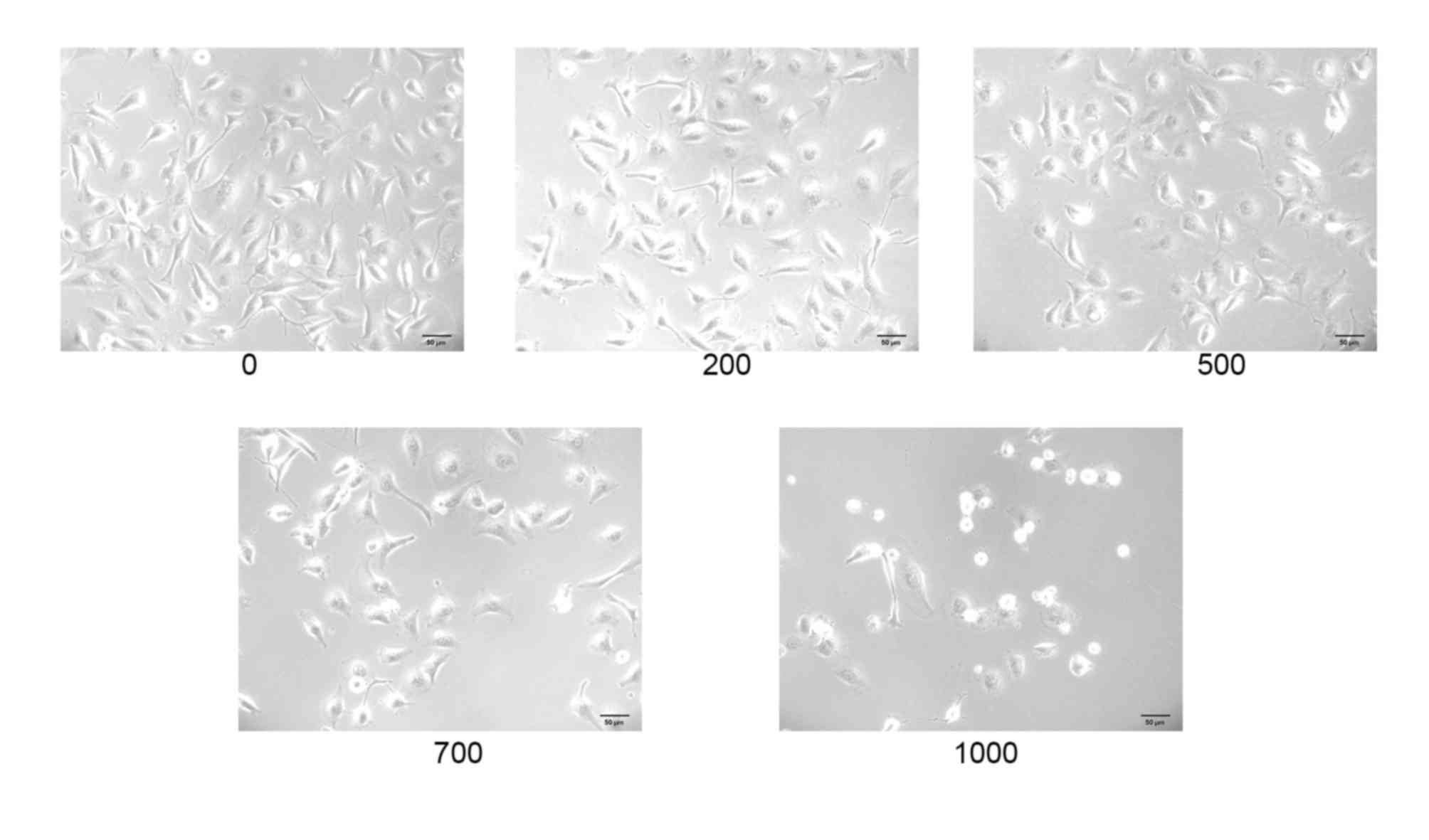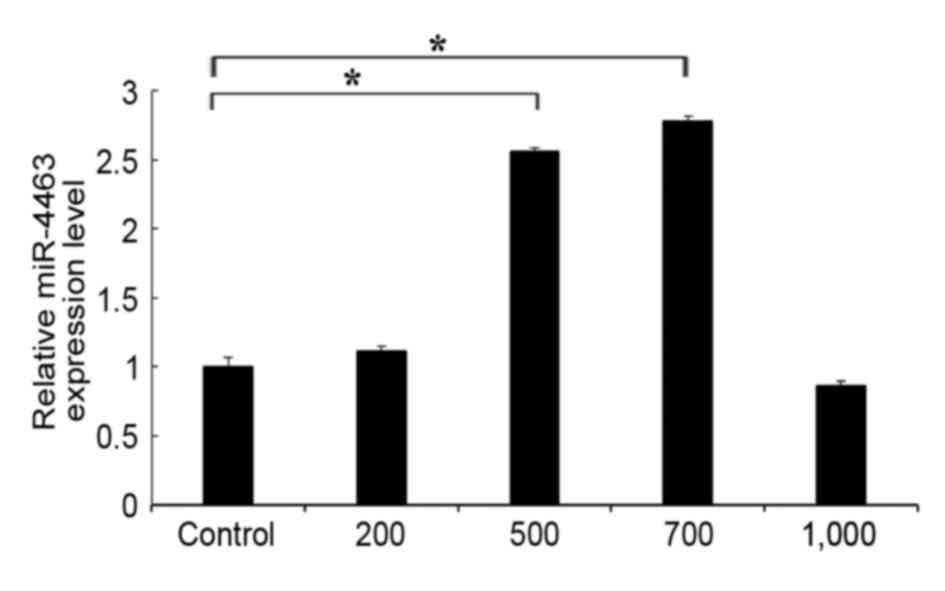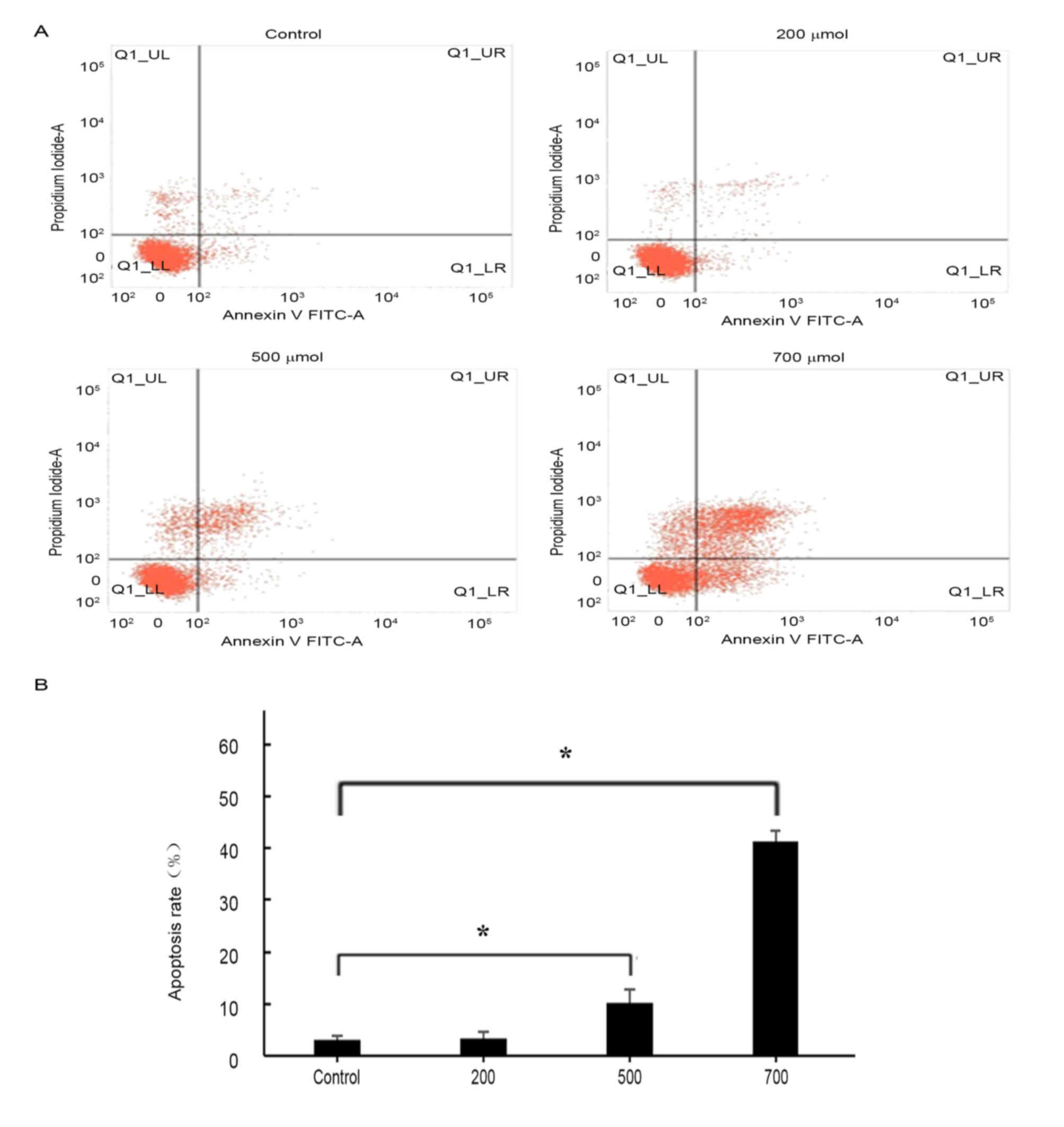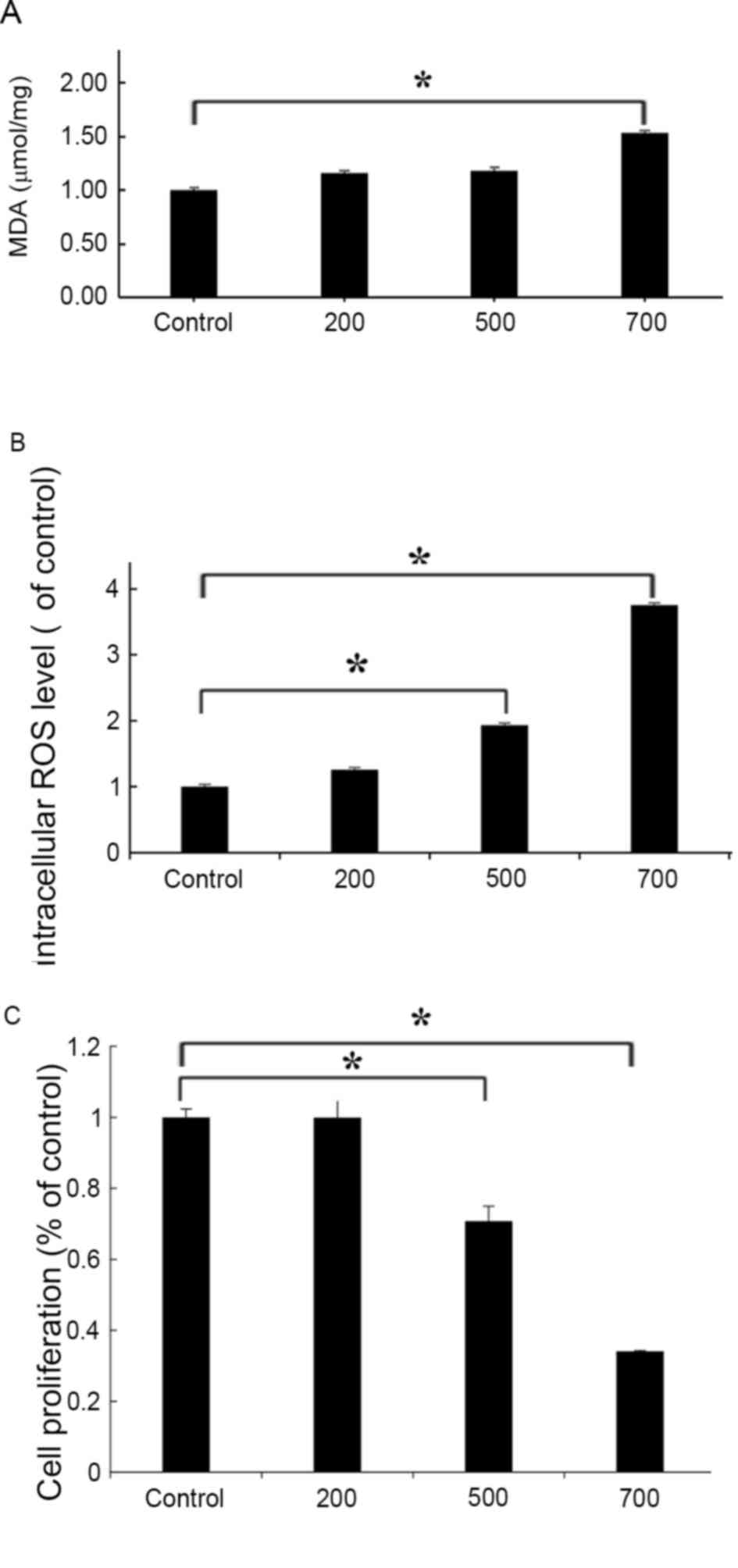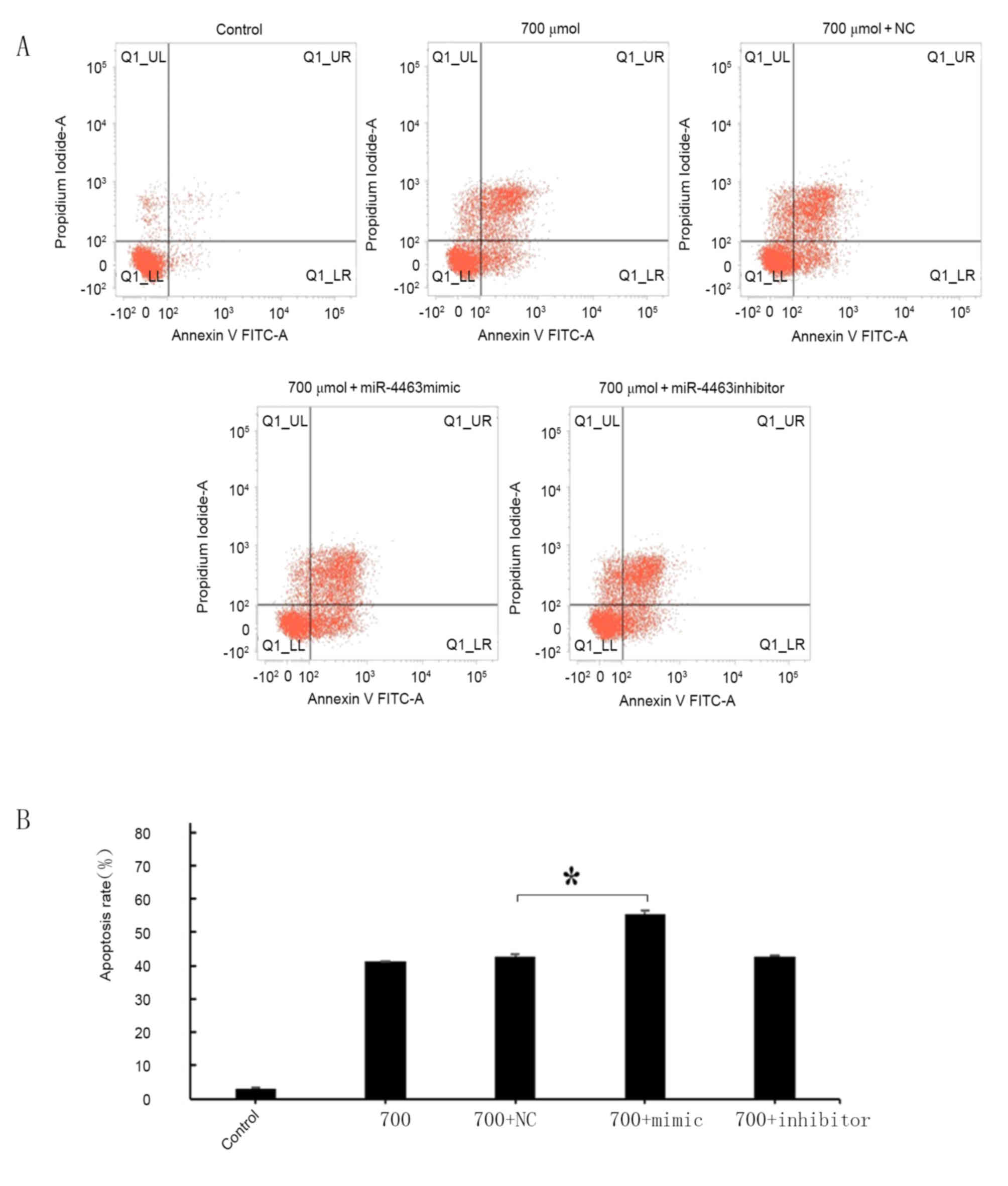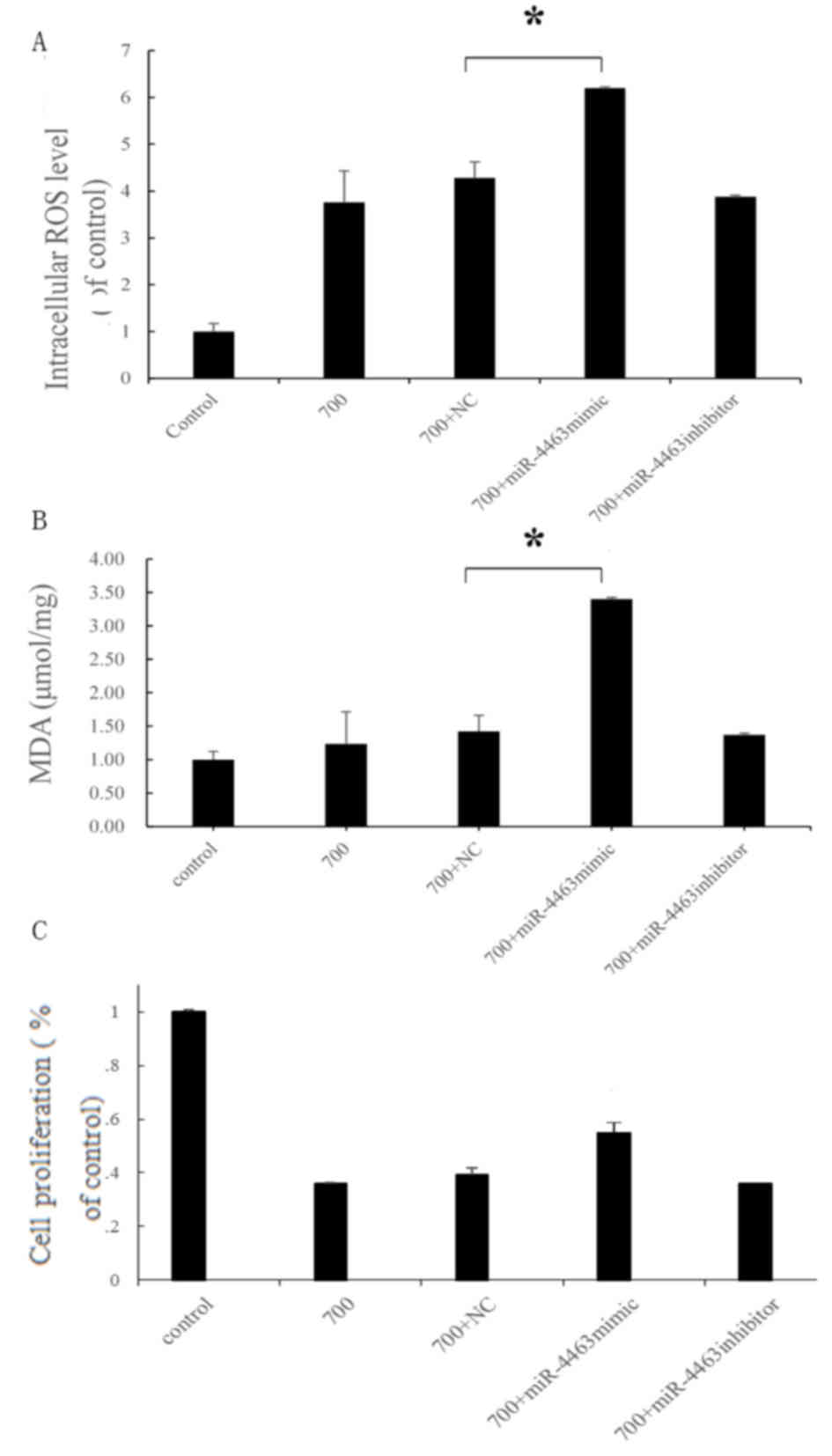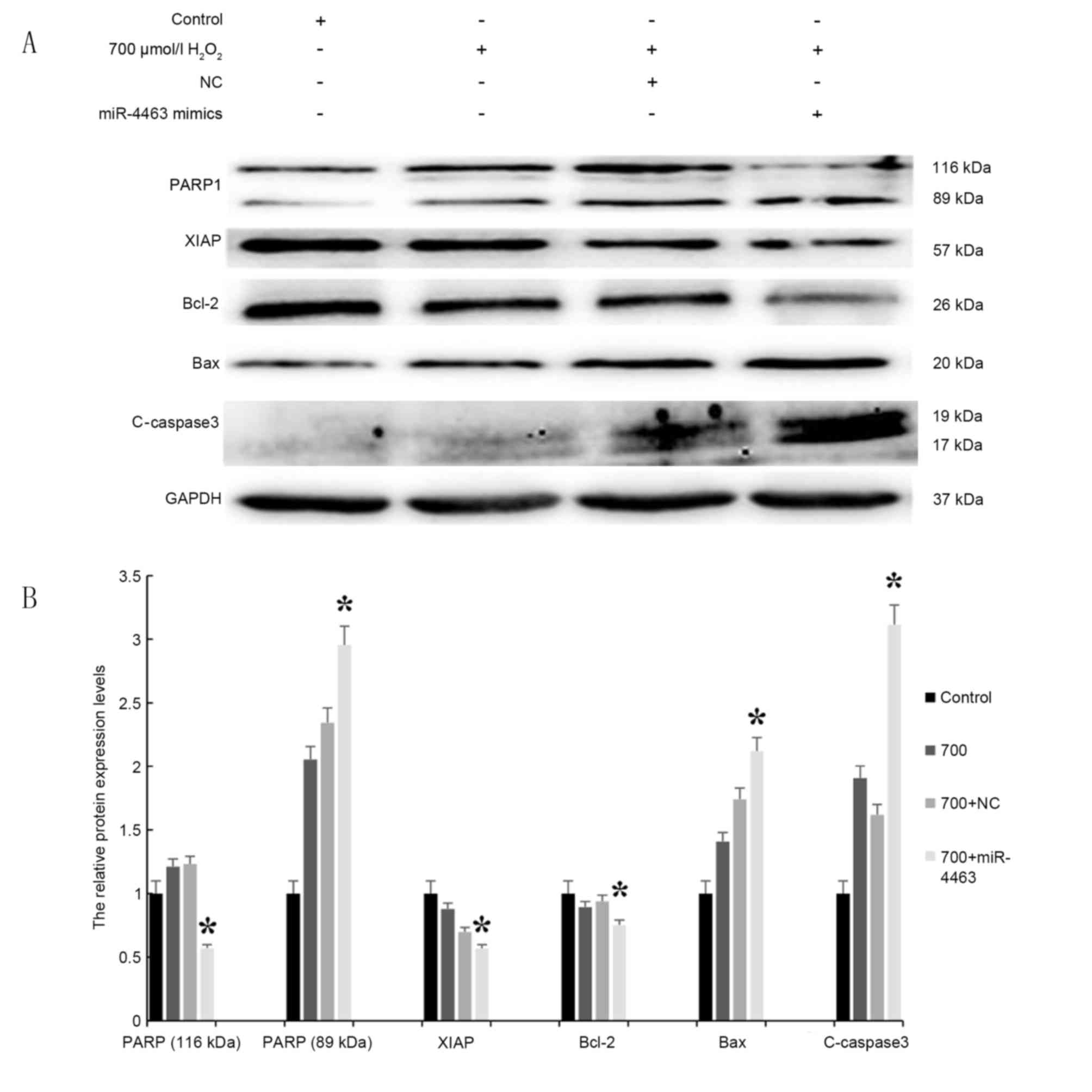|
1
|
Ono K: MicroRNA-133a in the development of
arteriosclerosis obliterans. J Atheroscler Thromb. 22:342–343.
2015. View Article : Google Scholar : PubMed/NCBI
|
|
2
|
Rajput C, Tauseef M, Farazuddin M, Yazbeck
P, Amin MR, Br V Avin, Sharma T and Mehta D: MicroRNA-150
suppression of angiopoetin-2 generation and signaling is crucial
for resolving vascular injury. Arterioscler Thromb Vasc Biol.
36:380–388. 2016. View Article : Google Scholar : PubMed/NCBI
|
|
3
|
Li X, Li J, Li Z, Sang Y, Niu Y, Zhang Q,
Ding H and Yin S: Fucoidan from Undaria pinnatifida prevents
vascular dysfunction through PI3K/Akt/eNOS-dependent mechanisms in
the l-NAME-induced hypertensive rat model. Food Funct. 7:2398–2408.
2016. View Article : Google Scholar : PubMed/NCBI
|
|
4
|
Guo R, Li W, Liu B, Li S, Zhang B and Xu
Y: Resveratrol protects vascular smooth muscle cells against high
glucose-induced oxidative stress and cell proliferation in vitro.
Med Sci Monit Basic Res. 20:82–92. 2014. View Article : Google Scholar : PubMed/NCBI
|
|
5
|
Csordas A, Kreutmayer S, Ploner C, Braun
PR, Karlas A, Backovic A, Wick G and Bernhard D: Cigarette smoke
extract induces prolonged endoplasmic reticulum stress and
autophagic cell death in human umbilical vein endothelial cells.
Cardiovasc Res. 92:141–148. 2011. View Article : Google Scholar : PubMed/NCBI
|
|
6
|
Jeon BK, Kwon K, Kang JL and Choi YH:
Csk-induced phosphorylation of Src at tyrosine 530 is essential for
H2O2-mediated suppression of ERK1/2 in human
umbilical vein endothelial cells. Sci Rep. 5:127252015. View Article : Google Scholar : PubMed/NCBI
|
|
7
|
Chen X, Pang S, Lin J, Xia J and Wang Y:
Allicin prevents oxidized low-density lipoprotein-induced
endothelial cell injury by inhibiting apoptosis and oxidative
stress pathway. BMC Complement Altern Med. 16:1332016. View Article : Google Scholar : PubMed/NCBI
|
|
8
|
Zhou DY, Su Y, Gao P, Yang QH, Wang Z and
Xu Q: Resveratrol ameliorates high glucose-induced oxidative stress
injury in human umbilical vein endothelial cells by activating
AMPK. Life Sci. 136:94–99. 2015. View Article : Google Scholar : PubMed/NCBI
|
|
9
|
Zheng D, Yu Y, Li M, Wang G, Chen R, Fan
GC, Martin C, Xiong S and Peng T: Inhibition of microRNA 195
prevents apoptosis and multiple-organ injury in mouse models of
sepsis. J Infect Dis. 213:1661–1670. 2016. View Article : Google Scholar : PubMed/NCBI
|
|
10
|
Hecker M, Thamilarasan M, Koczan D,
Schröder I, Flechtner K, Freiesleben S, Füllen G, Thiesen HJ and
Zettl UK: MicroRNA expression changes during interferon-beta
treatment in the peripheral blood of multiple sclerosis patients.
Int J Mol Sci. 14:16087–16110. 2013. View Article : Google Scholar : PubMed/NCBI
|
|
11
|
Zhao S, Li T, Li J, Lu Q, Han C, Wang N,
Qiu Q, Cao H, Xu X, Chen H and Zheng Z: miR-23b-3p induces the
cellular metabolic memory of high glucose in diabetic retinopathy
through a SIRT1-dependent signalling pathway. Diabetologia.
59:644–654. 2016. View Article : Google Scholar : PubMed/NCBI
|
|
12
|
Li X, Yao N, Zhang J and Liu Z:
MicroRNA-125b is involved in atherosclerosis obliterans in vitro by
targeting podocalyxin. Mol Med Rep. 12:561–568. 2015.PubMed/NCBI
|
|
13
|
Correia AC, Moonen JR, Brinker MG and
Krenning G: FGF2 inhibits endothelial-mesenchymal transition
through microRNA-20a-mediated repression of canonical TGF-b
signaling. J Cell Sci. 129:569–579. 2016. View Article : Google Scholar : PubMed/NCBI
|
|
14
|
Savoia C, Sada L, Zezza L, Pucci L, Lauri
FM, Befani A, Alonzo A and Volpe M: Vascular inflammation and
endothelial dysfunction in experimental hypertension. Int J
Hypertens. 2011:2812402011. View Article : Google Scholar : PubMed/NCBI
|
|
15
|
Ding CF, Chen WQ, Zhu YT, Bo YL, Hu HM and
Zheng RH: Circulating microRNAs in patients with polycystic ovary
syndrome. Hum Fertil (Camb). 18:22–29. 2015. View Article : Google Scholar : PubMed/NCBI
|
|
16
|
He XM, Zheng YQ, Liu SZ, Liu Y, He YZ and
Zhou XY: Altered plasma microRNAs as novel biomarkers for
arteriosclerosis obliterans. J Atheroscler Thromb. 23:196–206.
2016. View Article : Google Scholar : PubMed/NCBI
|
|
17
|
Lu G, Wong MS, Xiong MZQ, Leung CK, Su XW,
Zhou JY, Poon WS, Zheng VZY, Chan WY and Wong GKC: Circulating
MicroRNAs in delayed cerebral infarction after aneurysmal
subarachnoid hemorrhage. J Am Heart Assoc. 6:pii: e005363. 2017.
View Article : Google Scholar
|
|
18
|
Liu X and Sun J: Endothelial cells
dysfunction induced by silica nanoparticles through oxidative
stress via JNK/P53 and NF-kappaB pathways. Biomaterials.
31:8198–8209. 2010. View Article : Google Scholar : PubMed/NCBI
|
|
19
|
Lesniewska MA, Dereziński P, Klupczyńska
A, Kokot ZJ, Ostrowski T, Zeidler J and Muszalska I: HPLC and
HPLC/MS/MS studies on stress, accelerated and intermediate
degradation tests of antivirally active tricyclic analog of
acyclovir. J AOAC Int. 98:1240–1247. 2015. View Article : Google Scholar : PubMed/NCBI
|
|
20
|
Lennicke C, Rahn J, Lichtenfels R,
Wessjohann LA and Seliger B: Hydrogen peroxide - production, fate
and role in redox signaling of tumor cells. Cell Commun Signal.
13:392015. View Article : Google Scholar : PubMed/NCBI
|
|
21
|
Zhang H, Sheng C, Yin Y, Wen S, Yang G,
Cheng Z and Zhu Q: PABPC1 interacts with AGO2 and is responsible
for the microRNA mediated gene silencing in high grade
hepatocellular carcinoma. Cancer Lett. 367:49–57. 2015. View Article : Google Scholar : PubMed/NCBI
|
|
22
|
Livak KJ and Schmittgen TD: Analysis of
relative gene expression data using real-time quantitative PCR and
the 2(−Delta Delta C(T)) method. Methods. 25:402–408. 2001.
View Article : Google Scholar : PubMed/NCBI
|
|
23
|
Nagababu P, Barui AK, Thulasiram B, Devi
CS, Satyanarayana S, Patra CR and Sreedhar B: Antiangiogenic
activity of mononuclear copper(II) polypyridyl complexes for the
treatment of cancers. J Med Chem. 58:5226–5241. 2015. View Article : Google Scholar : PubMed/NCBI
|
|
24
|
Ma Y and Li W, Yin Y and Li W: AST IV
inhibits H2O2-induced human umbilical vein
endothelial cell apoptosis by suppressing Nox4 expression through
the TGF-β1/Smad2 pathway. Int J Mol Med. 35:1667–1674.
2015.PubMed/NCBI
|
|
25
|
Yan S, Zhang X, Zheng H, Hu D, Zhang Y,
Guan Q, Liu L, Ding Q and Li Y: Clematichinenoside inhibits VCAM-1
and ICAM-1 expression in TNF-α-treated endothelial cells via NADPH
oxidase-dependent IκB kinase/NF-κB pathway. Free Radic Biol Med.
78:190–201. 2015. View Article : Google Scholar : PubMed/NCBI
|
|
26
|
Liu S, Luo R, Xiang Q, Xu X, Qiu L and
Pang J: Design and synthesis of novel xyloketal derivatives and
their protective activities against
H2O2-induced HUVEC injury. Mar Drugs.
13:948–973. 2015. View Article : Google Scholar : PubMed/NCBI
|
|
27
|
Hou X, Tong Q, Wang W, Xiong W, Shi C and
Fang J: Dihydromyricetin protects endothelial cells from hydrogen
peroxide-induced oxidative stress damage by regulating
mitochondrial pathways. Life Sci. 130:38–46. 2015. View Article : Google Scholar : PubMed/NCBI
|
|
28
|
Wu W, Zhang D, Pan D, Zuo G, Ren X and
Chen S: Downregulation of vascular endothelial growth factor
receptor-2 under oxidative stress conditions is mediated by
b-transduction repeat-containing protein via glycogen synthase
kinase-3b signaling. Int J Mol Med. 37:911–920. 2016.PubMed/NCBI
|
|
29
|
Chen AY, Lü JM, Yao Q and Chen C:
Entacapone is an antioxidant more potent than vitamin C and vitamin
E for scavenging of hypochlorous acid and peroxynitrite and the
inhibition of oxidative stress-induced cell death. Med Sci Monit.
22:687–696. 2016. View Article : Google Scholar : PubMed/NCBI
|
|
30
|
Zhang HB, Wen JK, Zhang J, Miao SB, Ma GY,
Wang YY, Zheng B and Han M: Flavonoids from Inula britannica
reduces oxidative stress through inhibiting expression and
phosphorylation of p47(phox) in VSMCs. Pharm Biol. 49:815–820.
2011. View Article : Google Scholar : PubMed/NCBI
|
|
31
|
Fetahu IS, Tennakoon S, Lines KE, Gröschel
C, Aggarwal A, Mesteri I, Baumgartner-Parzer S, Mader RM, Thakker
RV and Kállay E: miR-135b- and miR-146b-dependent silencing of
calcium-sensing receptor expression in colorectal tumors. Int J
Cancer. 138:137–145. 2016. View Article : Google Scholar : PubMed/NCBI
|
|
32
|
Hu W, Wang M, Yin H, Yao C, He Q, Yin L,
Zhang C, Li W, Chang G and Wang S: MicroRNA-1298 is regulated by
DNA methylation and affects vascular smooth muscle cell function by
targeting connexin 43. Cardiovasc Res. 107:534–545. 2015.
View Article : Google Scholar : PubMed/NCBI
|
|
33
|
Liu J, Li W and Wang S, Wu Y, Li Z, Wang
W, Liu R, Ou J, Zhang C and Wang S: miR-142-3p attenuates the
migration of CD4+ T cells through regulating actin
cytoskeleton via RAC1 and ROCK2 in arteriosclerosis obliterans.
PLoS One. 9:e955142014. View Article : Google Scholar : PubMed/NCBI
|
|
34
|
Mostafavi N, Haghjooy-Javanmard S,
Presidend N, Manssori NS and Kelishadi R: Persistence of
endothelial cell damage late after Kawasaki disease in patients
without coronary artery complications. Adv Biomed Res. 4:252015.
View Article : Google Scholar : PubMed/NCBI
|
|
35
|
Du P, Suhaeri M, Subbiah R, Van SY, Park
J, Kim SH, Park K and Lee K: Elasticity modulation of
fibroblast-derived matrix for endothelial cell vascular
morphogenesis and mesenchymal stem cell differentiation. Tissue Eng
Part A. 22:415–426. 2016. View Article : Google Scholar : PubMed/NCBI
|
|
36
|
Song Z, Liu Y, Hao B, Yu S, Zhang H, Liu
D, Zhou B, Wu L, Wang M, Xiong Z, et al: Ginsenoside Rb1 prevents
H2O2-induced HUVEC senescence by stimulating
sirtuin-1 pathway. PLoS One. 9:e1126992014. View Article : Google Scholar : PubMed/NCBI
|
|
37
|
Yin YL, Li P, Yang J, Liu DW, Sun RL, Pan
GP, Wan GM and Wan GR: Protective effect of ultrafiltered XinMaiJia
extract against H2O2-induced injury in human
umbilical vein endothelial cells through NHE1 downregulation. Genet
Mol Res. 13:8436–8449. 2014. View Article : Google Scholar : PubMed/NCBI
|
|
38
|
Zhang L, Zhou M, Qin G, Weintraub NL and
Tang Y: miR-92a regulates viability and angiogenesis of endothelial
cells under oxidative stress. Biochem Biophys Res Commun.
446:952–958. 2014. View Article : Google Scholar : PubMed/NCBI
|
|
39
|
Kojima H, Otani A, Oishi A, Makiyama Y,
Nakagawa S and Yoshimura N: Granulocyte colony-stimulating factor
attenuates oxidative stress-induced apoptosis in vascular
endothelial cells and exhibits functional and morphologic
protective effect in oxygen-induced retinopathy. Blood.
117:1091–1100. 2011. View Article : Google Scholar : PubMed/NCBI
|
|
40
|
Yu DS, Lv G, Mei XF, Cao Y, Wang YF, Wang
YS and Bi YL: miR-200c regulates ROS-induced apoptosis in murine
BV-2 cells by targeting FAP-1. Spinal cord. Dec 2–2014.(Epub ahead
of print).
|
|
41
|
Kong BS, Cho YH and Lee EJ: G
protein-coupled estrogen receptor-1 is involved in the protective
effect of protocatechuic aldehyde against endothelial dysfunction.
PLoS One. 9:e1132422014. View Article : Google Scholar : PubMed/NCBI
|



